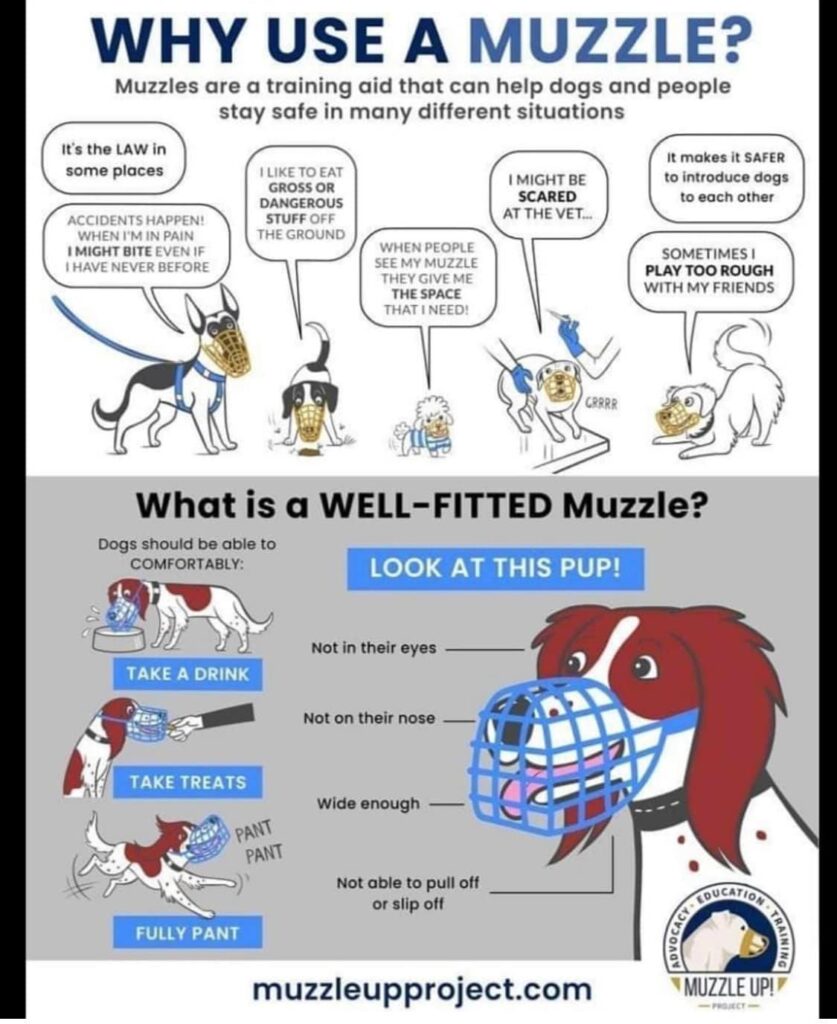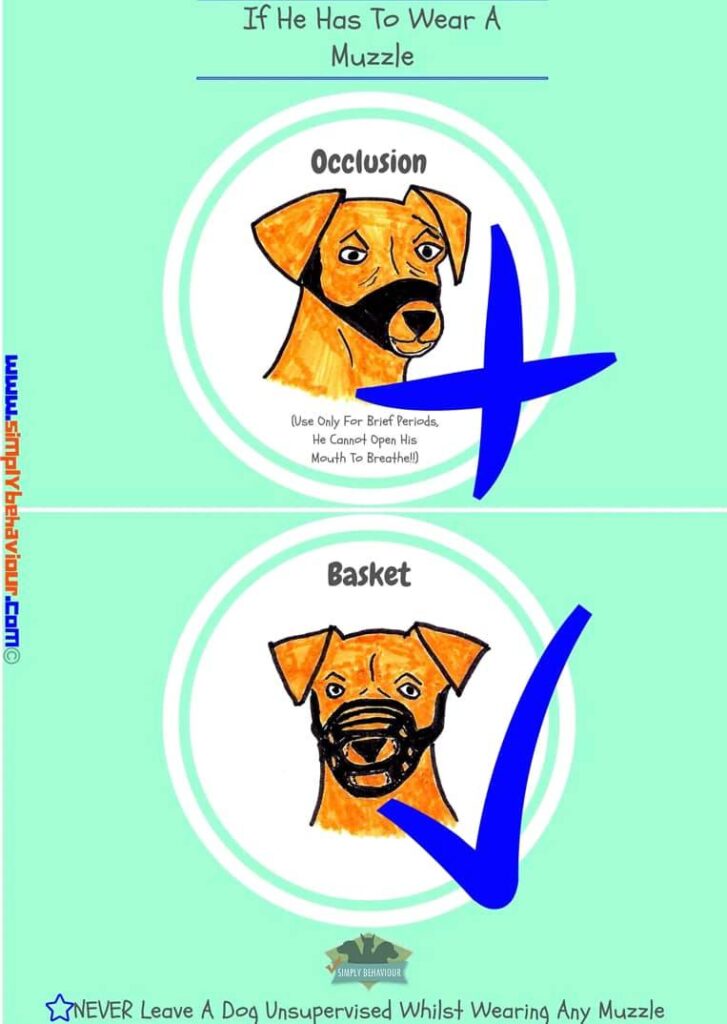
This particular guide is why more people should understand muzzles, muzzle training your dog and the importance of your dog being used to one.
Bare with me, I’ll explain.
There is a lot of stigma around muzzles and the uses of them. Many see a muzzle and automatically assume a dog to be “aggressive.”
There are many reasons a dog may wear a muzzle:
The number of aggressive dogs in that list is very small because diagnosable canine aggression is rare and usually accompanies some kind of neurological issue.
You could perhaps put dogs that have been trained to catch prey in this category, depending on your philosophical standing point; like ex racing greyhounds, ex gun dogs etc.
The most important reasons above, that makes muzzling something for all dogs, is Vet visits, treatment and recovery.
It is common, even likely, that a dog will be reactive if they are in pain or ill.
Some triggers of reactivity are musculoskeletal pain, skin problems and gastrointestinal issues.
If your dog is displaying reactive behaviour; ESPECIALLY if it is sudden or out of character, a full veterinary and diet check must be carried out, to rule out any medical cause, before behaviour can be examined from a psychological point of view.
Having your dog already conditioned to a muzzle will make this entire process easier and not add any unneeded stress to an already distressing situation.
As seen below, a properly fitted muzzle should allow for a *FULL PANT* – this can be measured by having your dog hold a tennis ball in their mouth.

Muzzles are only to be used for safety, not to put dogs into situations that make them feel uncomfortable: if your dog has fears then we can work on that.
Muzzles must also not be worn unsupervised
These can be done in fun 5-10 minutes sessions, it’s like a game for them!
Firstly, introduce the muzzle as a mundane item among toys and other things the dog already knows (harness, lead perhaps)Scatter food among the items and inside the muzzle so your dog can get investigate and get used to it.
Remove most of the items and repeat the scattering.
Once the muzzle is alone you can place food in your hand and hold it underneath the muzzle.
Working up in the stages creates positive associations with the item as well as creating habits with the dog, coming to and interacting with the muzzle.
You can then hold it with food behind it and reward for them putting their face in. Once your dog is okay with it on their face then you will have to work on some duration so it can be handy to use a longer lasting reward like squeezable cheese or dog safe peanut butter!
Hold the muzzle up whilst they get their reward.
This helps to desensitise the dog to having it on for longer.
Move onto doing it up & just heavily reward having it on.
Practice some cues in the home whilst they have it on and then remove.
Ensure it’s well fitted and not rubbing anywhere.
Move outside and continually reward it still.
Keep the distance from others at first whilst they get used to the feeling and having it on for walks etc.
Any malleable muzzles are not bite proof so if a dog is reactive through fear/anxiety then it would be best to have a metal cage typed muzzle.

Our thanks go to Cleo Wiltshire (FF Level 4 Trainer/Behaviour Consultant) for writing this guide for us.
We hope your have found this guide on Muzzle Training useful. You can see other help guides here: Dog Training Guides.